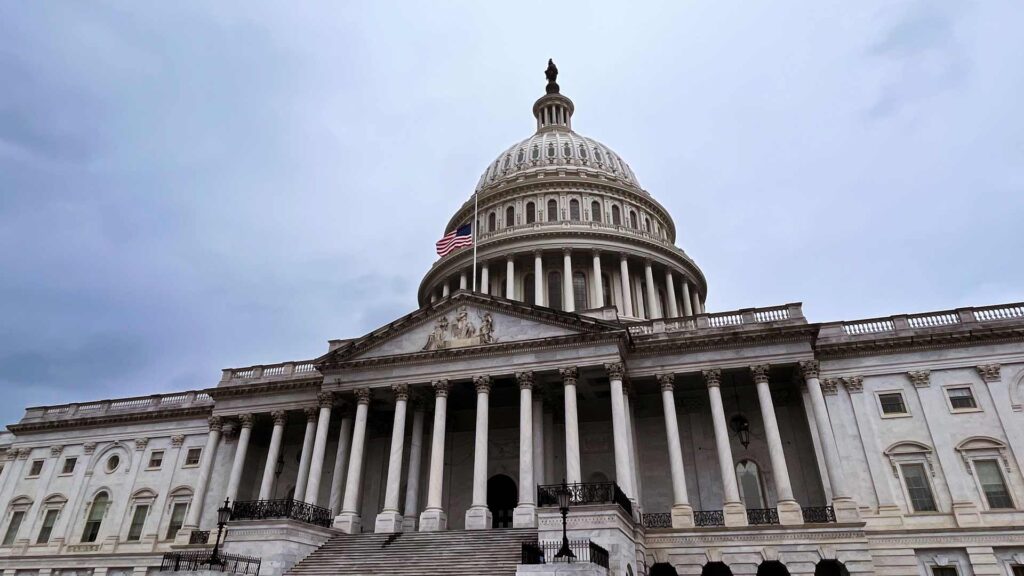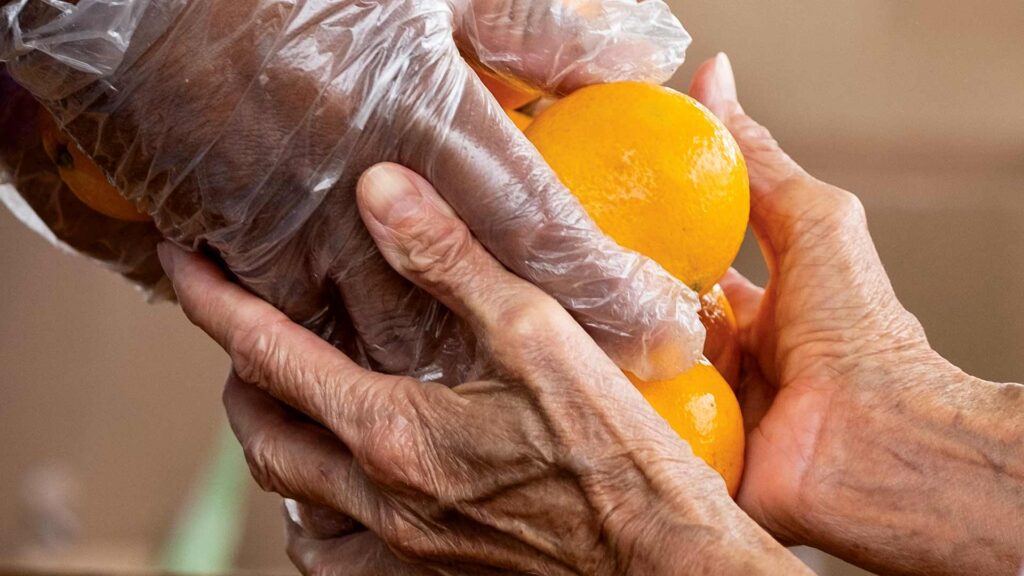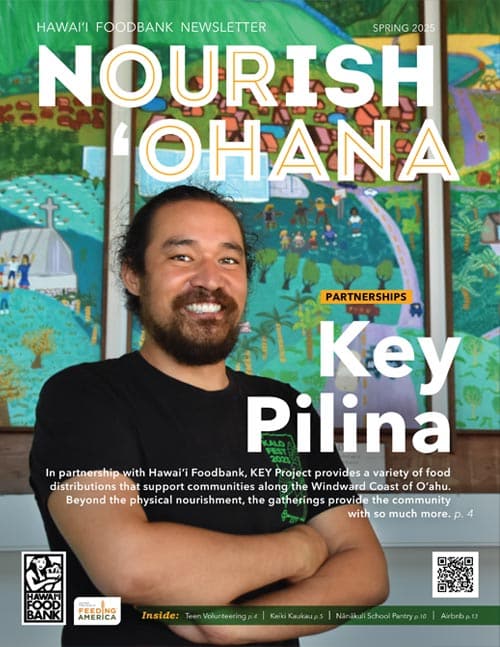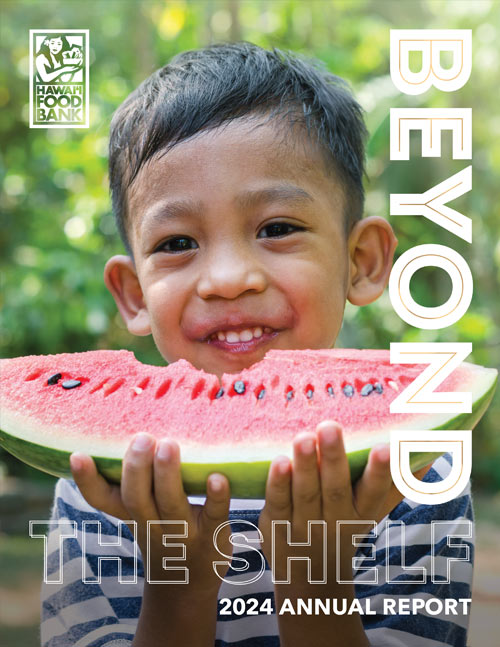Key Pilina
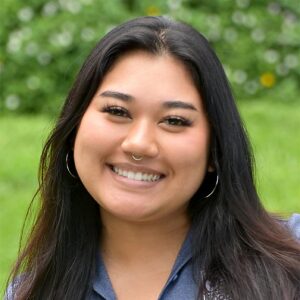
Curstyn Yoshimoto
Beyond physical nourishment, KEY Project’s monthly ‘Ohana Foodbank Distributions provide the community with so much more.
Tucked away beneath the lush, green Ko‘olau Mountain Range, a lone building stands just off Kamehameha Highway along Waihe‘e Road. This humble yet inviting building is home to Kualoa-He‘eia Ecumenical Youth (KEY) Project, a community center that facilitates a variety of programs, events and other services aimed at supporting the needs of families and individuals throughout Windward O‘ahu.
“It’s a very special place. It’s very unique, very different from any other place around the island – or any place in the world,” states Kalae Kukahiko, facility manager at KEY Project, when describing his Windward community. “You can’t quite put a finger on it, but all I can say – it’s filled with a lot of love and aloha.”
That same feeling permeates the walls of KEY Project, and it exemplifies the organization’s pilina (connection) to its community.
“What makes KEY project unique is really the place that we are in and the community that we work with,” adds Joe Wat, community development coordinator at KEY Project. “We’re a community center at the end of the day. If nobody’s here, it’s just a building. But when our community gathers – and our community is from Kāneʻohe to Kahuku – that is what makes this place special. It’s the people that choose to gather here and the stories that they bring.”
You can’t quite put a finger on it, but all I can say – it’s filled with a lot of love and aloha.
– Kalae Kukahiko, Facility Manager at KEY Project

Originally founded in 1968 to serve low-income, at-risk youth in nearby semi-rural areas, KEY Project has expanded its services throughout the years to meet the evolving needs of its diverse, multicultural community. Despite “Youth” being a part of its name, KEY Project now works to create solutions that support community members of all ages, from keiki to kūpuna.
“Our community has always, historically, been very resilient. Very problem solving, very kind, very generous,” describes Desiree Martinez, community development coordinator at KEY Project. “I hear stories from my grandparents and from my family, and that’s how it was back then. And it still is like that now – except there are a little bit more challenges and barriers.”
Currently, 1 in 3 households across the island are facing food insecurity, meaning not every member of the household is receiving enough food to live an active, healthy life. Recent challenges, including rising costs of living and the expiration of pandemic-related support systems, continue to strain families even further.
“Food is definitely a need,” Desiree says of her community. “You could have all these other resources and all these other things, but, if somebody’s hungry, they might not be able to focus. By addressing food challenges and barriers, we’re able to help the other parts of a person’s life.”
Identifying a need to provide this broader level of support to the communities it serves, KEY Project opened a food pantry in 1997, in partnership with Hawai‘i Foodbank, where community members can take what they need up to twice per month. Since then, services have expanded to a variety of other Hawai‘i Foodbank programs, all aimed at increasing access to safe and healthy food. These include a monthly Senior Food Box distribution and multiple ‘Ohana Foodbank Distributions – part of Hawai‘i Foodbank’s ‘Ohana Produce Plus program – in Waihe‘e and Kahuku. For many families and neighbors, these food assistance opportunities are their only consistent source of fresh fruits and vegetables.
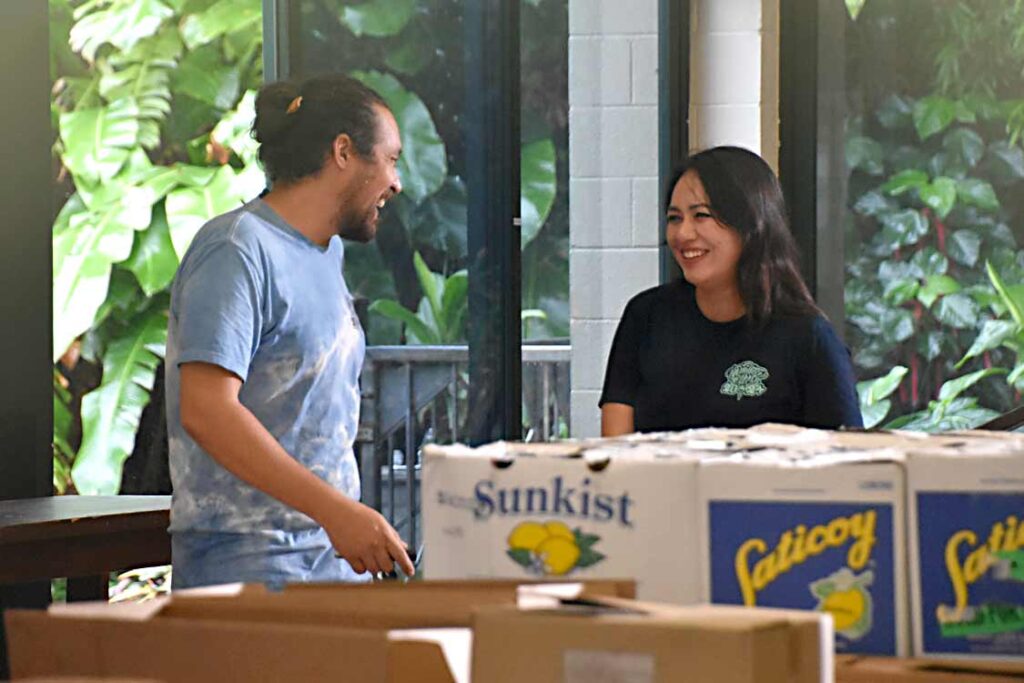
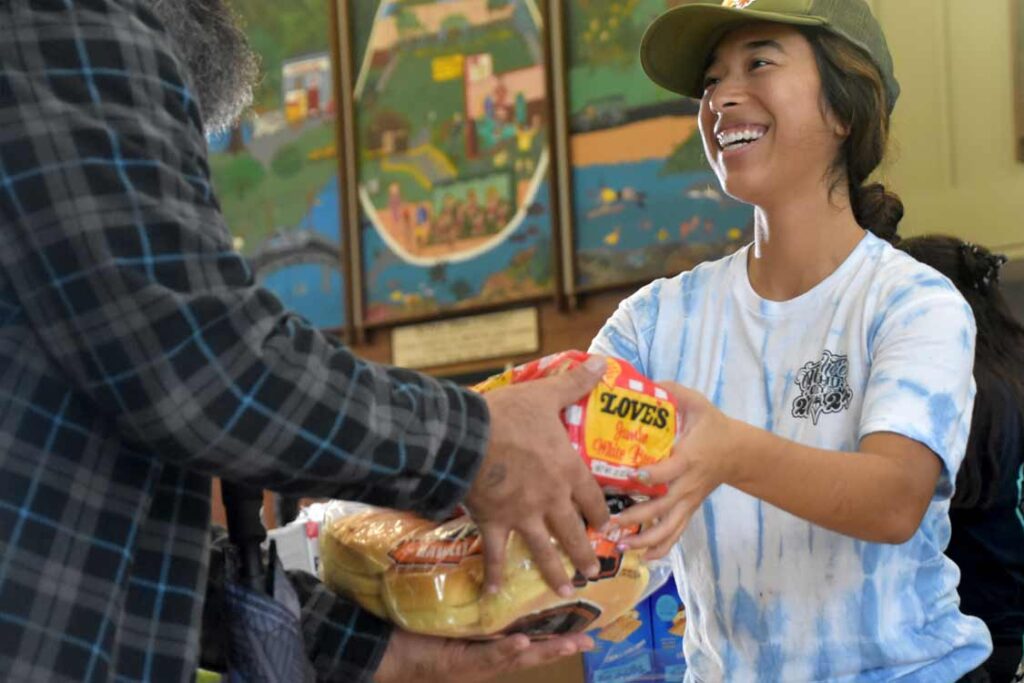
Food is such an important gift from the world. It’s the thing that makes sure that we can keep on doing whatever it is we're trying to do tomorrow. To get to tomorrow, we have to be well fed today.
– Joe Wat, Community Development Coordinator at KEY Project
“KEY Project, this place, is really about community,” says Joe. “And food, at its core, sharing food and spending time together – that’s how you build community. I think that’s why KEY Project has been a partner of Hawai‘i Foodbank for decades.”
Since launching in late 2019, the ‘Ohana Foodbank Distributions have provided neighbors and families with food for over half a million meals. Last year, Hawai‘i Foodbank and its agency partners like KEY Project supported over 5,300 Windward households.
“I see a lot of different faces,” explains Kalae. “Some feel that shame because they need to be here for the services that we provide, but it’s just reminding them that it’s okay – and that we all struggle at times.”
Beyond the physical nourishment, the KEY Project team explains, the ‘Ohana Foodbank Distributions provide the community with so much more.
“I truly feel that, as we are putting those bananas and those packages together, that we are filling it with the aloha spirit,” affirms Kalae. “And so, as we pass that on, it actually passes to them, you know? There’s a special connection.”
“Food is such an important gift from the world,” adds Joe. “It’s the thing that makes sure that we can keep on doing whatever it is we’re trying to do tomorrow. To get to tomorrow, we have to be well fed today … And I think that giving out the food to people is just like a ‘Hope to see you here tomorrow. Hope to see you here next week. Hope to see you here in a month. I hope we’re all going to make it together.’ That’s the goal.”

